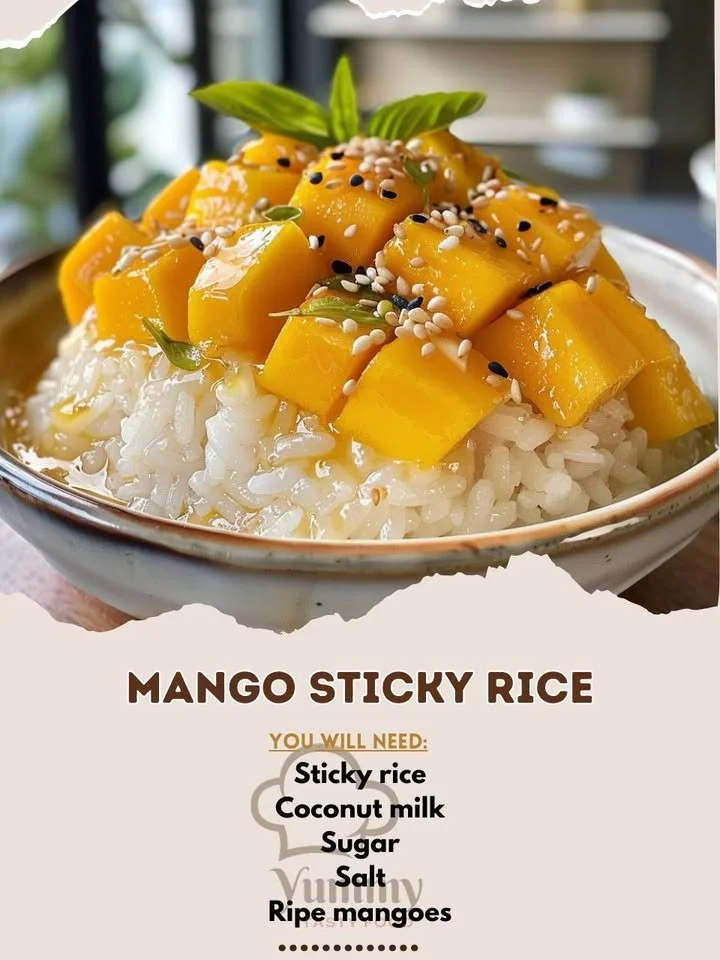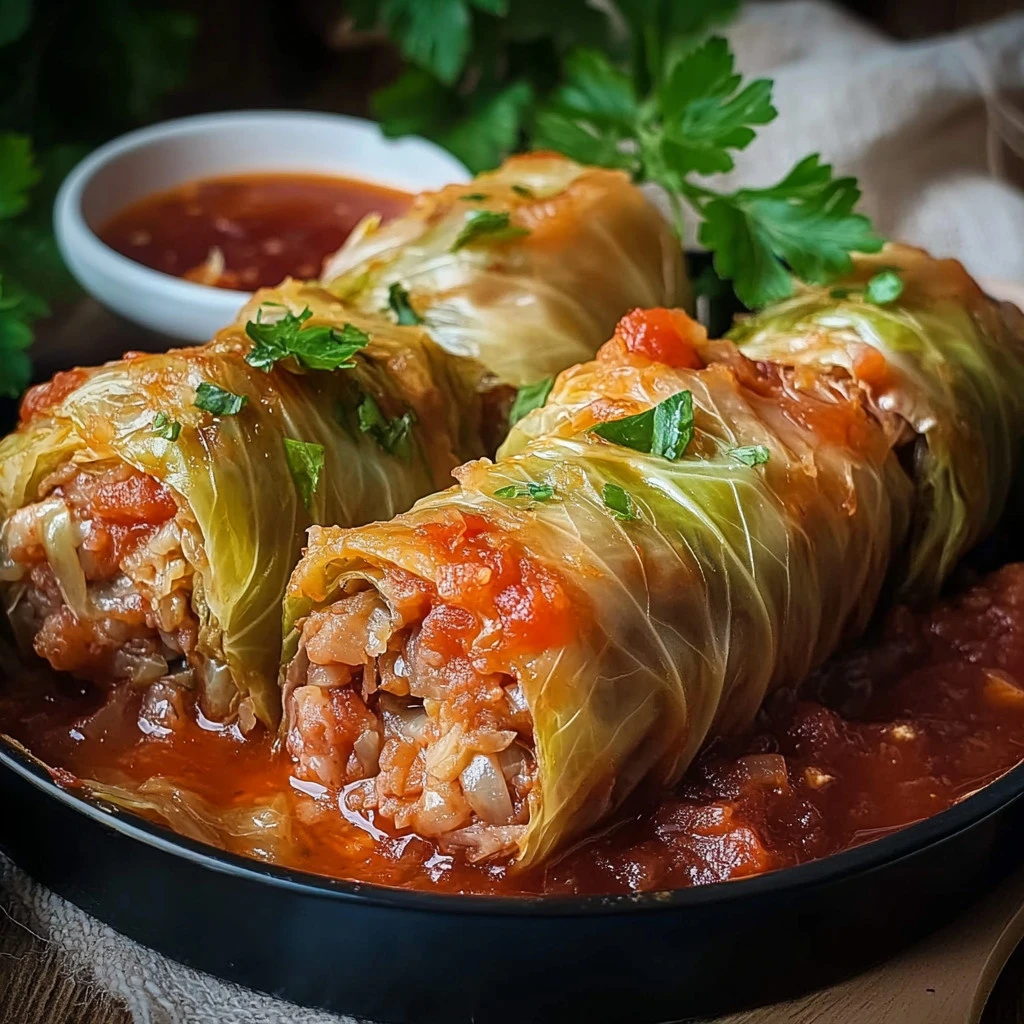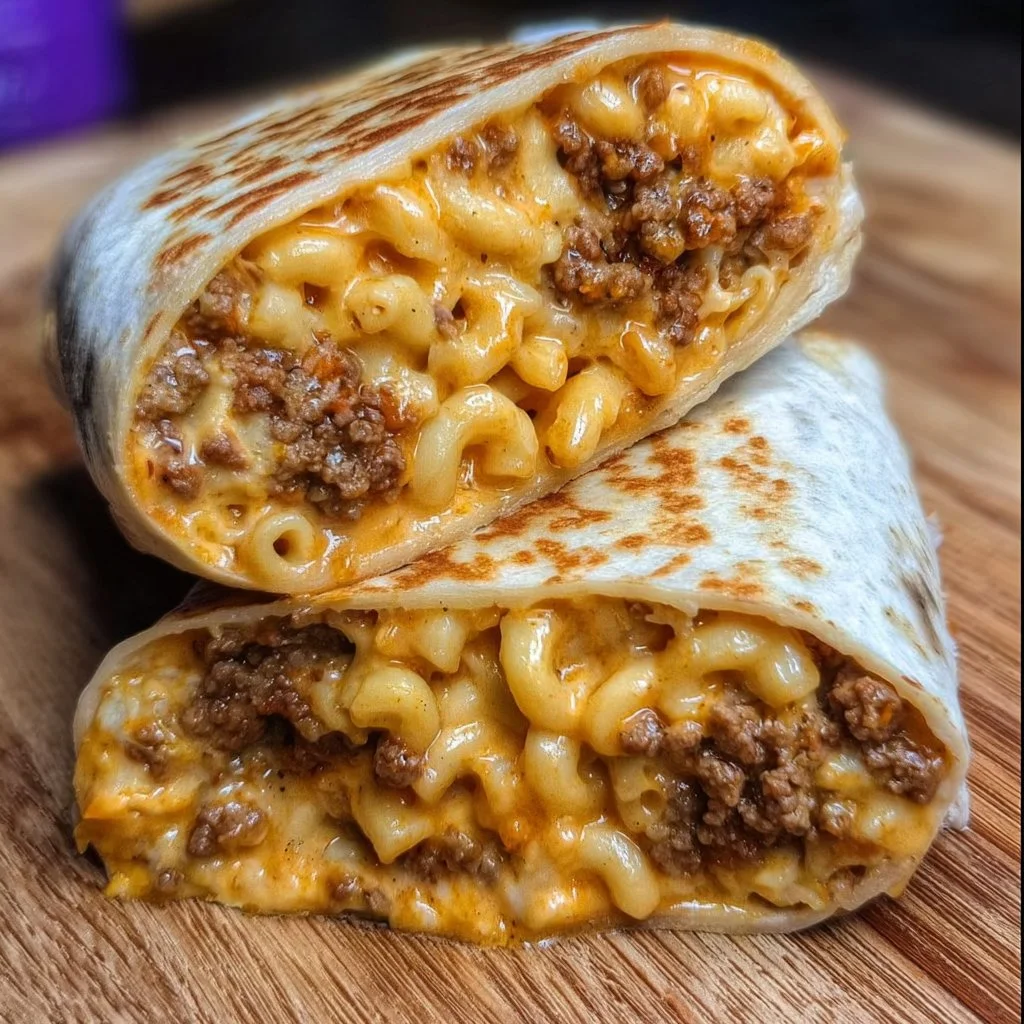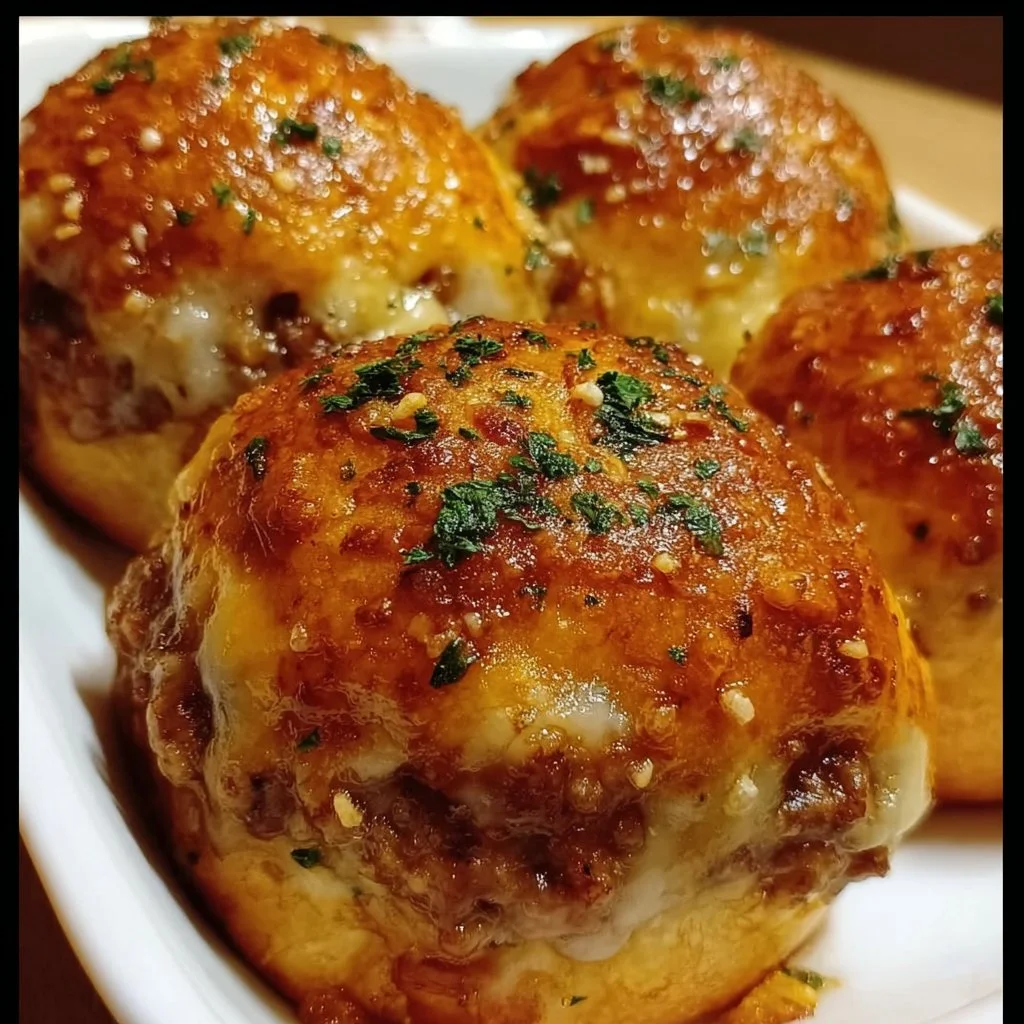Mango Sticky Rice: A Delightful Dessert Experience
Have you ever wondered why Mango Sticky Rice remains one of the most adored desserts, particularly in Southeast Asian countries like Thailand? This culinary masterpiece is not just a feast for the eyes; the description of each ingredient tells a story of tradition, flavor, and joy. With a perfectly sweet blend of ripe mangoes and creamy coconut sticky rice, this dish captures the hearts and palates of many. In this blog post, we’ll guide you step-by-step through creating this sumptuous dessert while exploring its history and charm.
Ingredients List
To create this delightful Mango Sticky Rice, you’ll need the following ingredients:
- Sticky rice: 1 cup (also known as glutinous or sweet rice)
- Coconut milk: 1 cup
- Sugar: 1/4 cup
- Salt: 1 tsp
- Ripe mangoes: 2, sliced
- Sesame seeds: For garnish
Substitution Ideas
If you’re looking for alternatives:
- Substitute the sticky rice with quinoa for a healthier twist.
- Use agave syrup instead of sugar for a low glycemic index option.
- Almond or cashew milk can replace coconut milk for a nutty flavor.
Timing
Preparation and cooking are paramount in achieving the authentic taste of Mango Sticky Rice. Here’s a quick breakdown:
- Preparation Time: 30 minutes
- Cooking Time: 60 minutes
- Total Time: 90 minutes
Interestingly, this is about 20% less time than the average dessert recipe, making it a reasonably quick and delightful option.
Step-by-Step Instructions
Step 1: Soak the Sticky Rice
Start by rinsing the sticky rice under cold water until the water runs clear. Then, soak it in water for at least 4 hours or overnight for the best results. This step ensures the rice achieves its characteristic chewy texture.
Step 2: Steam the Rice
Place the soaked rice in a bamboo steamer or a heat-proof container lined with cheesecloth and steam it over boiling water for about 30 minutes. Here’s a little tip: If you don’t have a steamer, you can use a regular pot as long as you’re careful not to overcook the rice. The end goal is soft, sticky perfection.
Step 3: Prepare the Coconut Sauce
While the rice is steaming, combine the coconut milk, sugar, and salt in a saucepan over medium heat. Stir until the sugar dissolves, but don’t let it boil. Reserve about a half cup for drizzling later.
Step 4: Combine the Components
Once the rice has cooked, transfer it to a mixing bowl and pour the warm coconut sauce over it. Mix thoroughly but gently, then let it sit for about 30 minutes. This allows the rice to absorb the flavors fully.
Step 5: Slice the Mango
While you wait, peel and slice the ripe mangoes into thin, beautiful pieces. Mangoes should be perfectly ripe, soft, and sweet to balance the sticky rice beautifully.
Step 6: Serve
To serve, mold the sticky rice onto a plate or in a small bowl. Arrange the sliced mangoes next to the rice. Drizzle any remaining coconut sauce you reserved on top, and sprinkle with sesame seeds for a delightful crunch.
Nutritional Information
Mango Sticky Rice offers more than just delightful taste. Here’s a quick look at the nutritional breakdown for one serving (assuming this recipe serves four):
- Calories: 340
- Carbohydrates: 63g
- Protein: 4g
- Fat: 9g
- Fiber: 2g
Being mindful of your dietary needs while enjoying desserts can be tricky; however, this dish’s balance of healthy fats and carbohydrates can fit into many diets.
Healthier Alternatives for the Recipe
If you’re concerned about the nutritional content or looking to accommodate specific dietary preferences, here are some alternatives:
- Quinoa or Brown Rice: Use these in place of sticky rice for an additional fiber boost.
- Reduced Sugar: Try using only 2 tablespoons of sugar or substitute with honey for a natural sweetener.
- Light Coconut Milk: Choose light coconut milk to reduce fat content while still enjoying that creamy texture.
Serving Suggestions
When it comes to serving Mango Sticky Rice, the presentation matters! Here are a few suggestions:
- Garnish with fresh mint or Thai basil leaves for an aromatic touch.
- Serve in coconut shells for an authentic tropical feel.
- Pair with a scoop of vanilla ice cream or coconut sorbet for extra indulgence.
Common Mistakes to Avoid
Even the most experienced cooks make mistakes in the kitchen. Here’s a list of typical pitfalls to avoid when preparing this glorious dessert:
- Under-soaking the rice: Soaking is crucial; skipping it leads to hard rice.
- Overcooking the rice: Ensure you steam until the rice is just right; overcooked rice turns mushy.
- Not balancing flavors: Monitor the sweetness of both the rice and coconut sauce to ensure a harmonious taste.
Storing Tips for the Recipe
If you happen to have leftovers (not likely but let’s hope!), here are some tips for proper storage:
- Refrigerate: Store in an airtight container for up to 2-3 days.
- Freezing: For longer storage, freeze the sticky rice, and mango slices separately. Always allow them to thaw in the fridge.
- Reviving Leftovers: Reheat rice with a splash of coconut milk to revitalize its flavor and texture.
Conclusion
From selecting the right ingredients to perfecting the recipe, creating something as irresistible as Mango Sticky Rice is genuinely a labor of love. The joy it brings not only lies in its tastes but also in its rich cultural background. We invite you to try this recipe out in your kitchen, and let us know your thoughts or share your variations!
FAQs
1. Can I use regular rice instead of sticky rice?
No, regular rice will not achieve the same sticky consistency needed for this dish.
2. Is it possible to make this dish vegan?
Absolutely! Ensure you’re using a plant-based sweetener and store-bought coconut milk that contains no animal products.
3. How do I prevent the rice from turning too sticky or clumpy?
Proper soaking and steaming methods help maintain just the right consistency without clumping.
4. What is the origin of Mango Sticky Rice?
This delightful dessert originates from Thailand, embodying the perfect blend of tropical fruits and rich coconut flavor appreciated in Southeast Asian cuisine.
If you enjoyed this post, explore more delicious recipes or cooking tips to enhance your culinary journey!
Happy cooking! 🍚🥭✨




